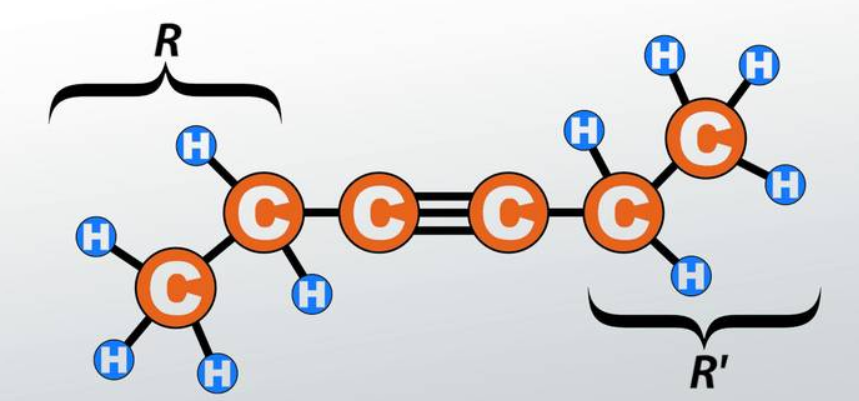Alkynes – physical properties
Alkynes contain a carbon-carbon triple bond in their molecules. Alkynes resemble alkenes in most of their characteristics. Alkynes are of two types: terminal and internal. Terminal alkynes are those in which carbon-carbon triple bond is present at the end of the carbon chain. And the internal alkynes are those who contain the carbon-carbon triple bond in the middle or other than at the end of the carbon chain.
Let us discuss the physical properties of the alkynes:
- Alkynes almost possess the same physical properties as alkanes and alkenes.
- Physical state and smell: the first three members (ethyne, propyne, and butyne) of the family are gases at the room temperature, the next eight members are liquids while the higher ones are solids. All alkynes are colorless. However, ethyne has a characteristic odor of garlic smell.
- Solubility: alkynes are weakly polar in nature. They are lighter than water and immisicible with water but are soluble in organic solvents such as petroleum ether, carbon tetrachloride, benzene, etc.
- Melting and boiling point: The melting and boiling points of the members of the family is slightly higher as compared to those of the corresponding members of the alkane and alkene families. This is due to the fact that the alkynes have linear structure and therefore, their molecules are more closely packed in space as compared to the alkanes and alkenes. The magnitude of attractive forces among them is higher and therefore, the melting and boiling points are also higher. The melting and boiling points increase with an increase in the molecular mass of the alkynes.
Let us compare the boiling and melting point of alkynes with alkanes and alkenes. Look at the table shown below:
| Hydrocarbons | Ethane | Ethane | Ethyne |
| Melting point (K)
Boiling point (K) |
101
184.5 |
104
171 |
191
198 |
- As we have observed from reactions that alkynes are high in energy. Alkynes are involved in a high release of energy which is due to the repulsion of the electrons in their molecules. The content of energy which is stored in the alkyne molecules contributes to this high amount of energy. The pi bond does not possess a great amount of energy even though the concentration is small within the molecule. The combustion of ethyne produces a huge amount of energy and water as shown below:
- Generally substituted alkynes have small dipole moments due to differences in electronegativity between the triple-bonded carbon atoms, those are sp hybridized and the single-bonded carbon atoms which are hybridized. The sp- hybridized carbon atoms which contain more percentage of s-character are more electronegative than a hybridized carbon atom. As a result of this, the asymmetrical electron distribution in the bond between such carbon atoms results in the generation of a dipole moment.
- The density of alkynes goes increasing with a corresponding increase in the mass of higher alkynes.
- Alkynes and the terminal alkynes are weakly acidic in nature.
- The uniqueness of the alkyne structure is due to the sp-hybridization.
- All the physical properties listed above as acidity of alkynes, non-polar bond strength and linearity is due to the presence of triple bond in these molecules.
